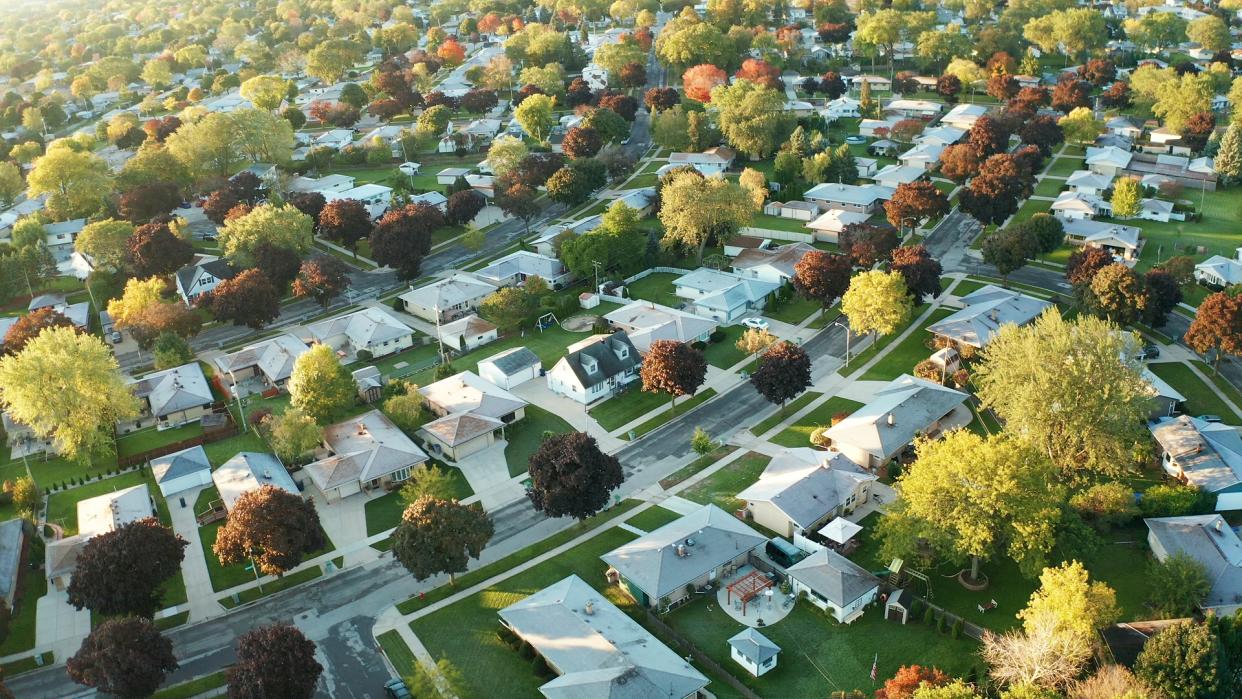What Exactly Is the Middle Class, According to Experts

The middle class contains about half of America, according to the Pew Research Center — 50%, to be exact. Another 21% fall into the upper class and 29% are in the lower class. But what level of wealth is considered middle class and who gets to decide who’s a member?
Certainly not the 50% that Pew categorizes as something else.
Check Out: How Much Household Income Will Be Considered Upper Middle Class in 5 Years?
Read Next: Owe Money to the IRS? Most People Don’t Realize They Should Do This One Thing
“Ninety percent of people interviewed say they consider themselves middle class,” said Jeff Webb, author of “American Restoration: How to Unshackle the Great Middle Class.”
If nine out of 10 people consider themselves middle class, but only half truly are, perhaps the definition of the demographic has changed.
GOBankingRates talked to several experts who think that’s precisely the case. Find out what it truly means to be middle class in the U.S.
Middle-Class Money: What Are the Income Requirements?
Money — and the security it brings — is at the heart of what it means to be middle class, but the concept also includes intangibles that are harder to quantify.
In an age where more than 50% of the country’s six-figure earners live paycheck to paycheck, it’s getting harder to tell the haves from the have-nots. But in its simplest form, the middle class is neither poor nor rich, so what are the income parameters?
Trending Now: A $150K Income Is ‘Lower Middle Class’ In These High-Cost Cities
According to the Pew Research Center’s definition, individuals belonging to the middle class have an annual household income ranging from two-thirds to double the national median. Recent numbers indicate that to be in the middle class, you need an annual household income between $39,693 and $119,080 in 2023. This figure should be adjusted based on the size of your family and where you live, as the standards fluctuate.
It’s Not How Much You Have, It’s How Much You Can Buy
The problem with specific dollar amounts is that a dollar buys more or less depending on where you spend it.
“Some economists prefer defining the middle class based on spending habits,” said Erika Kullberg, attorney, personal finance expert and founder of Erika.com. Families that can afford more than basic necessities but do not freely spend on luxury items are often categorized as middle class. This approach attempts to reflect the standard of living more accurately than mere income figures.”
A more accurate accounting would probably be to measure against the earner in the middle.
“In the United States, ‘middle class” refers to those with an annual household income that is at least two-thirds the national median income up to double the national median income where they live, noted Todd Stearn, financial expert and founder of The Money Manual.
The Rich Have Grown in Wealth and Numbers at the Expense of the Middle Class
The American middle class emerged as a force after World War II, but about 30 years later, it began contracting and continues to shrink to this day.
The middle has declined from 61% in 1971 to 50% in 2021, and it continues to face challenges.
“Your cost of living is a huge factor into whether or not you’ll feel middle class,” said Stearn. “Earning a so-called ‘middle-class’ income in a major city can leave you struggling to pay your housing, transportation, and food costs.”
Pew backs up that as the middle class has steadily contracted over the last half-century, the ranks of the rich have swelled and the wealth gap has widened.
In 1983, upper-income households owned 60% of the country’s wealth. By 2016, their share had grown to 79% — that’s four dollars out of five for the rich, with everyone else left to divvy up the scraps. The wealthiest Americans now have 12-figure fortunes and it’s plausible that one of them will become the world’s first trillionaire soon.
For middle-class Americans, the fortunes have been flowing in the other direction.
The problem is that many people are now finding it harder to maintain the same level of financial success as their parents or grandparents did. Wages have been stagnant for decades, the cost of living has increased and the ability to save money has diminished. The issue gets even thornier as people are on the verge of a global financial recession. The middle class still exists but the entry barrier got steeper — and it got more difficult to stay within the middle class.
The Middle Class Is the American Dream — Or, It Used To Be
In the abstract, the middle class has always represented the American dream — economic security, a safe and comfortable life and a future for your children. But is the dream becoming a fantasy? For many, it already has.
“While middle-class Americans have always been generally optimistic about their economic security and future… today’s brutal inflation [is] taking [its] toll,” said Webb.
Attaining things generally associated with being in the middle class — like homeownership, some level of savings, a retirement fund and job security — are now seen less as certainties. What’s worse, Americans feel abandoned by big business, the wealthy professional class and their government. And while the perception that working hard, getting an education and being a good citizen were always seen as the path to economic security and a relatively comfortable lifestyle, today’s economic challenges are rocking the foundation of middle-class confidence and optimism.
More From GOBankingRates
Why Florida's Retirees Are Fleeing -- And Where They're Going Instead
Here's How to Add $200 to Your Wallet -- Just For Banking Like You Normally Would
This article originally appeared on GOBankingRates.com: What Exactly Is the Middle Class, According to Experts
